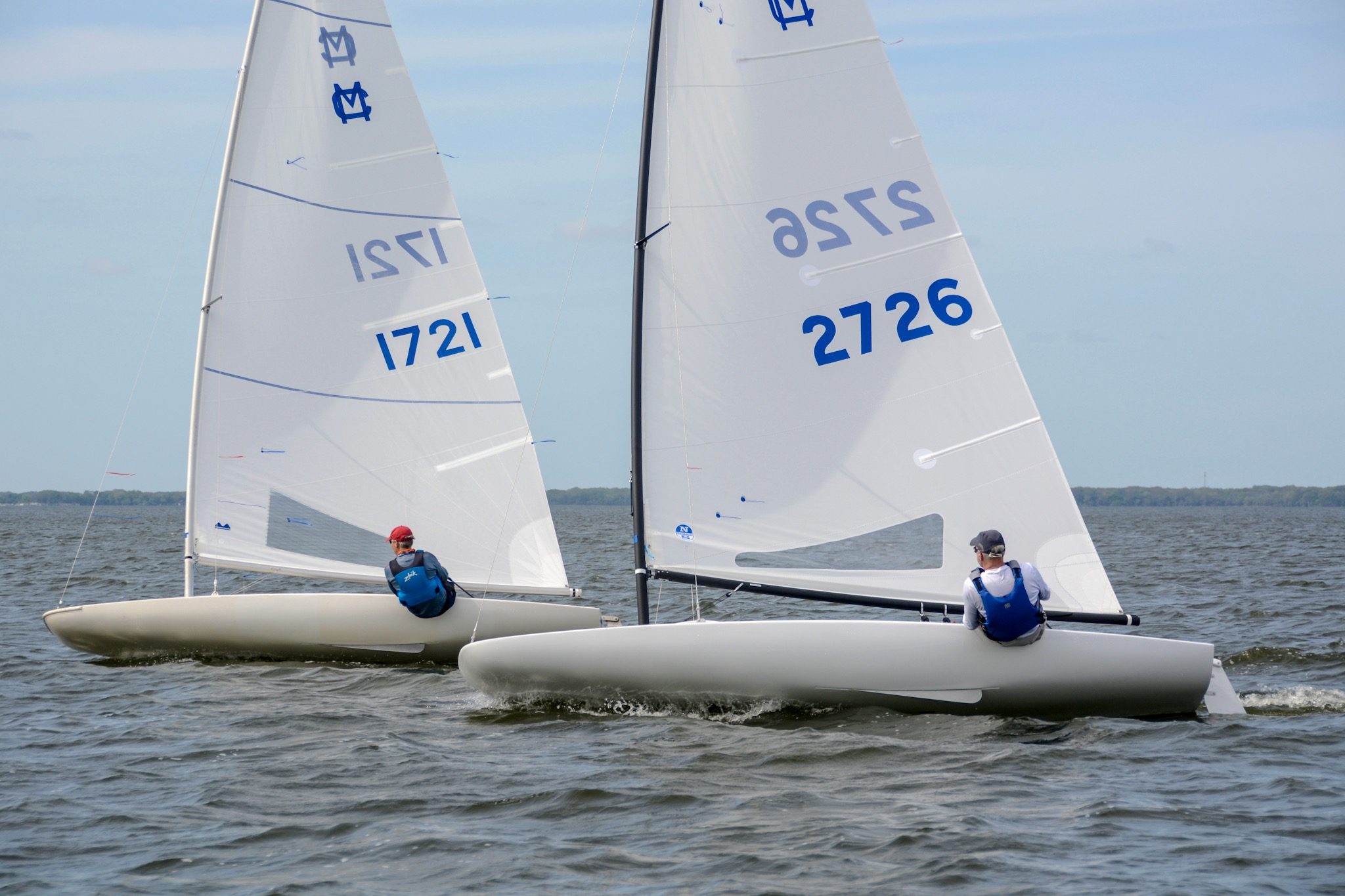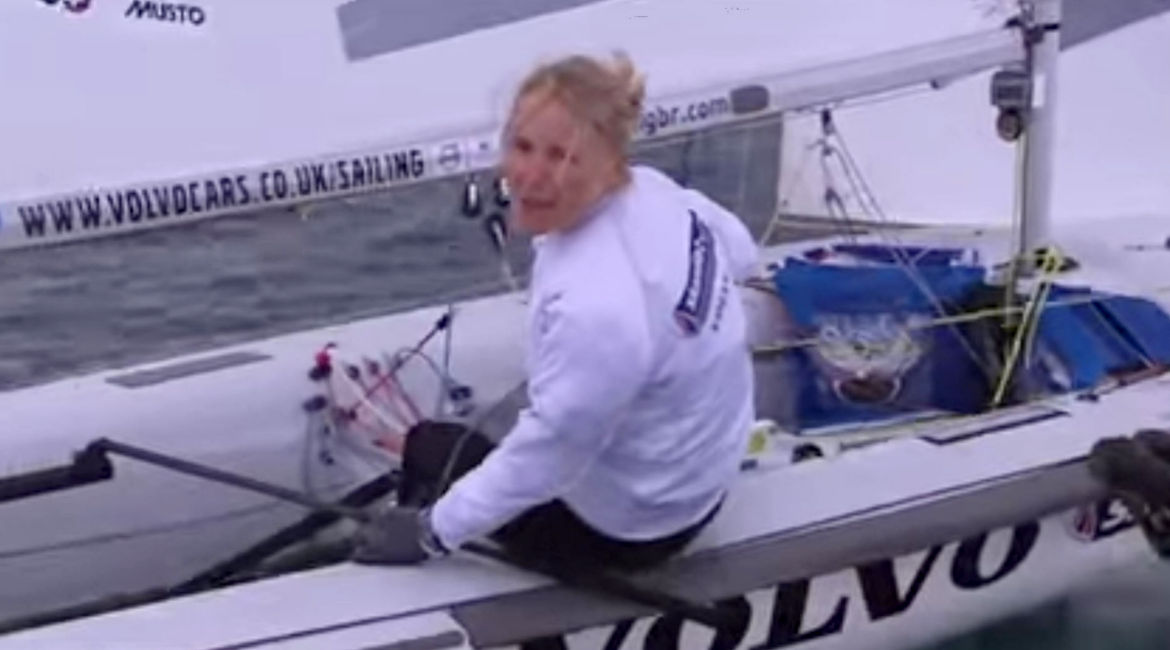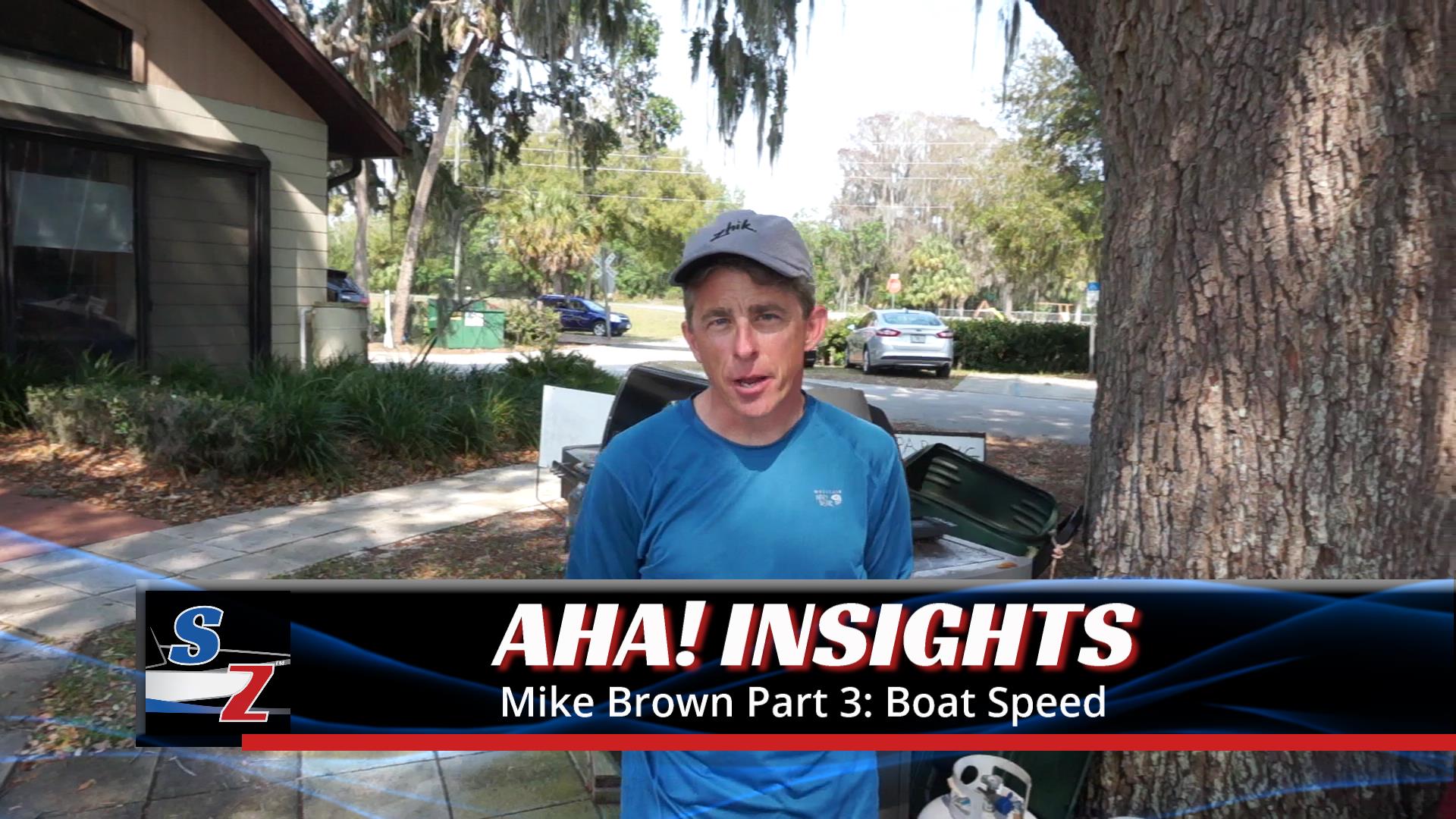Can’t point without pinching and losing speed? For this article, we collected everything we could find on how to solve common pointing problems. The experts are quite consistent, and what they say matches our experience. Here are five tips, in priority order.
This post has been updated from the original version with additional content and links.
#1. Trim harder
Many sailors with pointing problems don’t trim hard enough. The experts agree that the mainsail leech is the biggest trim factor to improve your pointing. A tight leech powers up the aft portion of the main and makes the boat turn up. A loose leech de-powers the main and makes the boat turn down.
The statement below is a nice summary of how to trim the leech to improve pointing.
Except in very light air or extra bumpy conditions, you start by making sure the mainsail is trimmed so that the boom is absolutely up on the centerline of the boat when the mainsheet is trimmed hard enough so that the telltale on the leech at the top batten is stalled out some of the time in any condition where you are not overpowered.
In light air, under 6 knots, it will be stalled most of the time. Once you get into the 7-10 range it will be stalled maybe half the time and in over 10 it will be stalled only occasionally, but you need to have the leech sheeted as tight as you can without being over-powered. Once you get into the real overpowered range, over 12 knots, you still need to keep the leech very tight for pointing but you may drop the traveler down so the boom is just enough to leeward to reduce extreme weather helm …
Help … I Can’t Point, Elliot-Pattison Sails
More Trim Tips
Here are some additional tips on trimming to maximize pointing:
- Top batten. The top batten on the main is a good visual reference. Trim to get the aft portion of the batten parallel to the boom in most conditions.
- Test trim. If the boat feels good, try trimming the main a little harder. If the boat responds, great; otherwise, ease back.
- Traveler. Keeping the traveler high helps you point, but it’s just as important to keep the boat moving – on its lines, with minimal weather helm. Don’t be afraid to drop the traveler when overpowered.
- Cunningham. Cunningham tension pulls the mainsail draft forward. Too much cunningham can reduce pointing in two ways:
- Flattens (opens) the leech. As discussed in tip #1, an open leech reduces pointing. This is more pronounced in some boats.
- Makes the sail fuller at the luff. A fuller luff makes the sail more forgiving but reduces pointing ability.
- Outhaul. Loosening the outhaul tightens the lower leech. If you’re not overpowered, a looser outhaul may help pointing. Don’t loosen too much and let the lower leech stall excessively. A telltale on the bottom batten is helpful.
#2. Get the Right Touch
Every nuance of variation in wind strength or wave size requires an immediate luff or bear away so as to keep the boat high on the wind, at a constant angle of heel, and at full speed.
Stuart Walker in Speed to Windward in Heavy Weather (Sailing World)
The skipper winning the most races inevitably is going to be the one with the best touch. I call touch the simultaneous coordination of steering and sail trim with wind and sea conditions.
Bruce Goldsmith in Sail Trim & Speed (Rebel Class Website)
More Tips About Touch
Thes quotes tell us that pointing problems arise from steering and trimming errors Let’s break these quotes into specific tips.
- Build speed first – don’t pinch. A boat needs to go fast before the underwater foils can develop enough lift to keep the boat tracking to windward. If you’re slow, bear off and ease your sails to get going.
- Test to windward constantly. Once you have speed and are trimmed in, try pointing higher in flat water or if wave conditions allow. Trim harder and flatten your sails. You probably can head up further than you thought. If you start to lose speed, ease and head back down. Repeating this as a cycle is called scalloping.
- Use luff telltales to steer. If you have pointing problems, the windward and leeward sail telltales near the luff can help you steer accurately. The leeward telltales are most important: if they’re stalling, and your sail trim is right, you’re sailing too low. The windward side telltales can and should stall periodically, unless you’re under-powered for the conditions. See our post Mainsail Telltales – A Better Approach.
- Don’t take unnecessary “downs.” The primary problem for most sailors is bearing off in a lull. Instead of bearing off, sail a straight line or just feather down slightly. See more in our post Sailing Lulls – What’s the Best Response?
- Make small adjustments. Practice making small, smooth adjustments in puffs and lulls, using a combination of hiking, easing/trimming, and steering. See our post on The No-Hike Hands Drill for more.
- The next level. Master the above tips first, but then try to move to the next level – constant interplay of steering and trimming to match the constant changes in wind and waves. See our post Do You have the Right Touch? for more.
#3. Maximize foil effectiveness
Your centerboard (or leeboard) and rudder provide lift to keep the boat tracking to windward. They work best when the flow over them is fast, smooth, and when their effective surface area is largest. Let’s break these three factors down.
- Fast flow. We discussed the importance of speed in tip #2. Perhaps you have seen cases in which another boat footed off below you and ended up sailing faster and higher, leaving you behind and to leeward. The additional speed made the other boat’s foils more effective.
- Smooth flow – constant angle of heel. You’ve probably noticed the negative effects of disturbed air on your sails. The same is true for underwater foils. Every time your angle of heel changes or you steer abruptly, the flow over your foils is disturbed and you lose distance to windward. Sail at a constant angle of heel! See our post on Sailing Upwind by Constant Angle of Heel for more.
- Effective surface area. More foil surface area means more lift. To realize the full surface area intended by the designer, you must sail with the designed angle of heel and board depth.
- Angle of heel. The board has the maximum effective surface area when it’s vertical in the water. Sail with the angle of heel that makes the board vertical.
- Board depth. Find out what board position constitutes full down for your boat. Don’t be afraid to raise your boards from the full down position as the breeze builds, as discussed on our post Setting Leeboard Height to Reduce Windward Helm.
#4. Find the right helm balance
Does a small amount of weather helm help you point? There is some controversy about this.
- Some sources say that, similar to the centerboard/leeboard, flow over the rudder provides some lift to help the boat track to windward. If the rudder is angled slightly to windward, this lift will increase. In our post, Mark Your Deck to Check Rudder Drag, we included a reference to a Buccaneer 18 tuning guide that provided data showing the beneficial effect of a 2-4 degree weather helm on upwind performance. If your weather helm is greater than this, you’re slowing your boat.
- Other experts, such as Dave Ullman, say that weather helm creates only drag. Ullman says that the only reason for weather helm upwind is to give the skipper a little feel in the tiller. Only top notch drivers can sail consistently with no weather helm.
We believe that a small amount of weather helm is best. To learn why, see our post on Manage Upwind Helm Balance for Speed and Feel.
#5. Freshen up your sails
If you’re doing everything else right and are still not pointing, it may be time to freshen up your sails. One tip for an old sail is to add a little extra cunningham to counter the effects of aging on sail shape.
I could not find definitive information about how to tell when to replace a sail. One of our posts includes comments from Bill Draheim, stating that you probably don’t need to get new sails every year.





